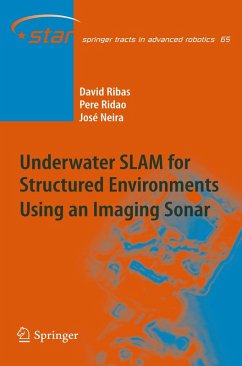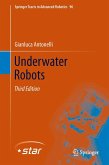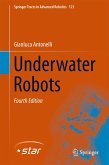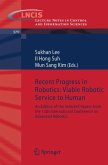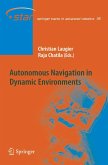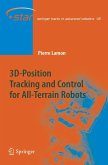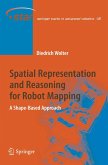David Ribas, Pere Ridao, José Neira
Underwater SLAM for Structured Environments Using an Imaging Sonar (eBook, PDF)
72,95 €
72,95 €
inkl. MwSt.
Sofort per Download lieferbar

36 °P sammeln
72,95 €
Als Download kaufen

72,95 €
inkl. MwSt.
Sofort per Download lieferbar

36 °P sammeln
Jetzt verschenken
Alle Infos zum eBook verschenken
72,95 €
inkl. MwSt.
Sofort per Download lieferbar
Alle Infos zum eBook verschenken

36 °P sammeln
David Ribas, Pere Ridao, José Neira
Underwater SLAM for Structured Environments Using an Imaging Sonar (eBook, PDF)
- Format: PDF
- Merkliste
- Auf die Merkliste
- Bewerten Bewerten
- Teilen
- Produkt teilen
- Produkterinnerung
- Produkterinnerung

Bitte loggen Sie sich zunächst in Ihr Kundenkonto ein oder registrieren Sie sich bei
bücher.de, um das eBook-Abo tolino select nutzen zu können.
Hier können Sie sich einloggen
Hier können Sie sich einloggen
Sie sind bereits eingeloggt. Klicken Sie auf 2. tolino select Abo, um fortzufahren.

Bitte loggen Sie sich zunächst in Ihr Kundenkonto ein oder registrieren Sie sich bei bücher.de, um das eBook-Abo tolino select nutzen zu können.
Provides solutions to the navigation problem for Autonomous Underwater Vehicles (AUVs) operating in structured environments Presents recent research in autonomous Underwater Research Presents techniques for feature extraction capable of dealing with a mechanically scanned imaging sonar
- Geräte: PC
- ohne Kopierschutz
- eBook Hilfe
- Größe: 5MB
Andere Kunden interessierten sich auch für
![Underwater Robots (eBook, PDF) Underwater Robots (eBook, PDF)]() Gianluca AntonelliUnderwater Robots (eBook, PDF)80,95 €
Gianluca AntonelliUnderwater Robots (eBook, PDF)80,95 €![Underwater Robots (eBook, PDF) Underwater Robots (eBook, PDF)]() Gianluca AntonelliUnderwater Robots (eBook, PDF)128,95 €
Gianluca AntonelliUnderwater Robots (eBook, PDF)128,95 €![Mobile Robotik (eBook, PDF) Mobile Robotik (eBook, PDF)]() Ulrich NehmzowMobile Robotik (eBook, PDF)42,25 €
Ulrich NehmzowMobile Robotik (eBook, PDF)42,25 €![Recent Progress in Robotics: Viable Robotic Service to Human (eBook, PDF) Recent Progress in Robotics: Viable Robotic Service to Human (eBook, PDF)]() Recent Progress in Robotics: Viable Robotic Service to Human (eBook, PDF)72,95 €
Recent Progress in Robotics: Viable Robotic Service to Human (eBook, PDF)72,95 €![Autonomous Navigation in Dynamic Environments (eBook, PDF) Autonomous Navigation in Dynamic Environments (eBook, PDF)]() Autonomous Navigation in Dynamic Environments (eBook, PDF)72,95 €
Autonomous Navigation in Dynamic Environments (eBook, PDF)72,95 €![3D-Position Tracking and Control for All-Terrain Robots (eBook, PDF) 3D-Position Tracking and Control for All-Terrain Robots (eBook, PDF)]() Pierre Lamon3D-Position Tracking and Control for All-Terrain Robots (eBook, PDF)72,95 €
Pierre Lamon3D-Position Tracking and Control for All-Terrain Robots (eBook, PDF)72,95 €![Spatial Representation and Reasoning for Robot Mapping (eBook, PDF) Spatial Representation and Reasoning for Robot Mapping (eBook, PDF)]() Diedrich WolterSpatial Representation and Reasoning for Robot Mapping (eBook, PDF)72,95 €
Diedrich WolterSpatial Representation and Reasoning for Robot Mapping (eBook, PDF)72,95 €-
-
-
Provides solutions to the navigation problem for Autonomous Underwater Vehicles (AUVs) operating in structured environments Presents recent research in autonomous Underwater Research Presents techniques for feature extraction capable of dealing with a mechanically scanned imaging sonar
Dieser Download kann aus rechtlichen Gründen nur mit Rechnungsadresse in A, B, BG, CY, CZ, D, DK, EW, E, FIN, F, GR, HR, H, IRL, I, LT, L, LR, M, NL, PL, P, R, S, SLO, SK ausgeliefert werden.
Produktdetails
- Produktdetails
- Verlag: Springer Berlin Heidelberg
- Seitenzahl: 144
- Erscheinungstermin: 28. Juli 2010
- Englisch
- ISBN-13: 9783642140402
- Artikelnr.: 44224239
- Verlag: Springer Berlin Heidelberg
- Seitenzahl: 144
- Erscheinungstermin: 28. Juli 2010
- Englisch
- ISBN-13: 9783642140402
- Artikelnr.: 44224239
- Herstellerkennzeichnung Die Herstellerinformationen sind derzeit nicht verfügbar.
David Ribas was born in Girona, Spain, in 1978. He received the M.S. degree in Industrial Engineering from the University of Girona, Spain, in 2003 and the Ph. D. degree in industrial engineering from the same university, in 2008. At the present time, he is a researcher in the Underwater Robotics Laboratory at the Computer Vision and Robotics Group from the University of Girona. His research activity is mainly focused on underwater robotics in the fields of sensor fusion, vehicle localization and map building. Pere Ridao was born in Spain in 1969. He received the Ms.C. degree in computer science in 1993 from the Technical University of Catalonia, Barcelona, Spain, and the Ph.D. degree in computer engineering in 2001 from the University of Girona, Spain. His research activity is mainly focused on underwater robotics in research topics such as intelligent control architectures, UUV modelling and identification, simulation, Navigation, Mission Control and real-time systems. He joined theInstitute of Informatics and Applications, University of Girona, in September 1995. Currently, he is an associate professor with the Department of Computer Engineering of the University of Girona and the head of the Research Center in Underwater Robotics (CIRS) located in the Scientific and Technological Park of the University of Girona. He is involved in national projects and European research networks about underwater robotics and some technology transference projects about real-time and embedded systems. Dr. Ridao is member of the IFAC's Technical Committee on Marine Systems, member of the editorial board of Springer's Intelligent Service Robotics journal, secretary of the Spanish OES chapter and also a board member of the Spanish RAS chapter. José Neira was born in Bogotá, Colombia, in 1963. He received the M.S. degree in computer science from the Universidad de los Andes, Colombia, in 1986, and the Ph.D. degree in computer science from the University of Zaragoza, Spain, in 1993.He is Associate Professor in the Departamento de Informática e Ingeniería de Sistemas, University of Zaragoza, where he is in charge of courses in compiler theory, computer vision and mobile robotics. His current research interests include autonomous robotics and environment modelling. José has been guest editor of the IEEE Transactions on Robotics special issue on Visual SLAM, together with Andrew Davison, Imperial College London, and John Leonard, MIT. He is currently associate editor of the IEEE Transactions on Robotics, guest editor of Autonomous Robots for the special issue on RSS 2008, together with Jeff Trinkle, Rensselaer Polytechnic Institute, and guest editor of Robotics and Autonomous Systems for the special issue Inside Data Association, together with Udo Frese, University of Bremen. He is also area chair for the Robotics: Science and Systems 2009 conference and local arrangements chair for Robotics: Science and Systems 2010.
State of the Art.- Design and Development of the Ictineu AUV.- Understanding Mechanically Scanned Imaging Sonars.- Localization with an a priori Map.- Simultaneous Localization and Mapping.- Conclusion.
State of the Art.- Design and Development of the Ictineu AUV.- Understanding Mechanically Scanned Imaging Sonars.- Localization with an a priori Map.- Simultaneous Localization and Mapping.- Conclusion.
